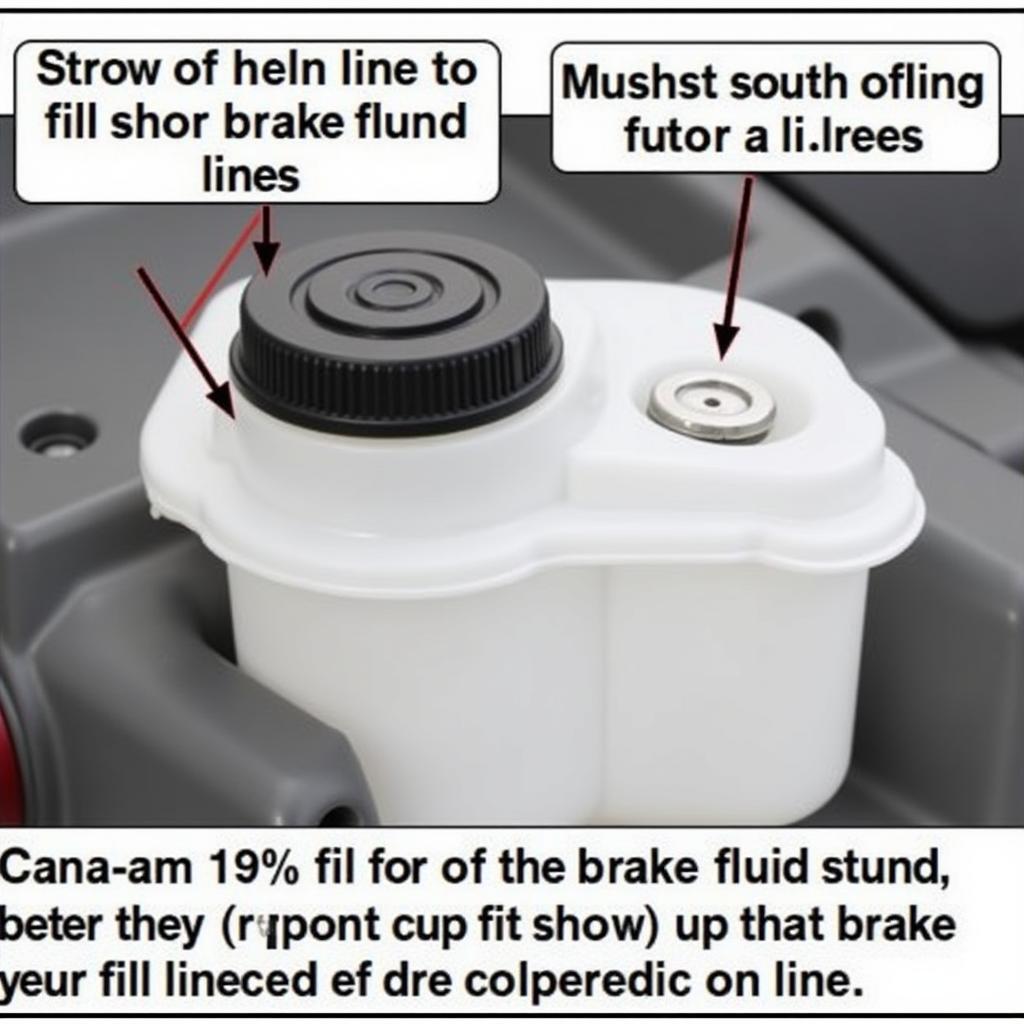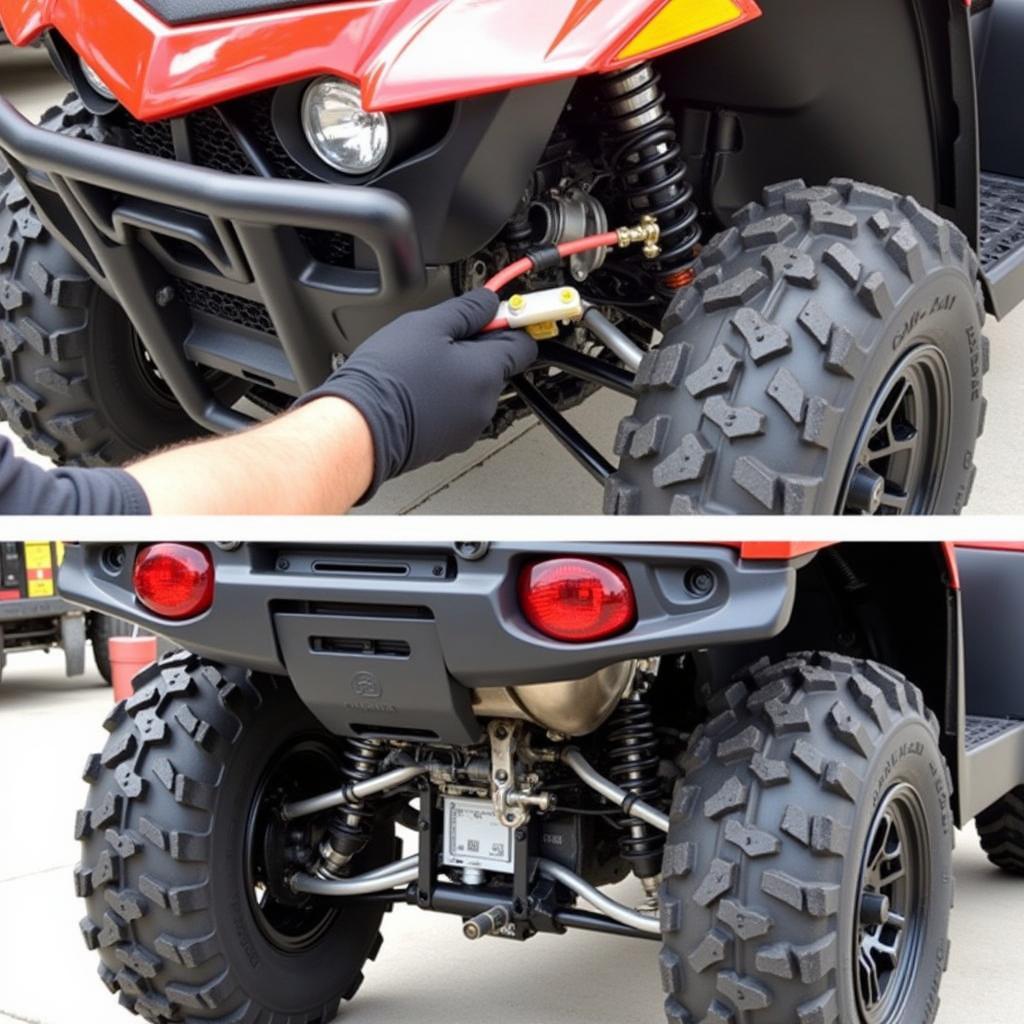If you own a 2007 Can-Am ATV or SSV, encountering a brake warning message can be a cause for concern. This guide provides a comprehensive approach to understanding, diagnosing, and potentially resolving the issue, leveraging insights from both user forums like www.can-amforum.com and my expertise in automotive electrical systems and remote diagnostics.
While this information is intended to be helpful, always prioritize safety. If you’re uncomfortable with any aspect of vehicle repair or if the problem persists, seeking assistance from a qualified Can-Am mechanic is highly recommended.
Common Causes of Brake Warning Messages
Before diving into specific solutions, it’s crucial to understand the potential triggers behind your 2007 Can-Am brake warning message. Here are some common culprits:
- Low Brake Fluid: Just like in cars and trucks, your Can-Am relies on hydraulic brake fluid to engage the brakes. A low fluid level, often due to leaks or worn brake pads, can trigger the warning.
- Faulty Brake Light Switch: This switch activates your brake lights when you press the brake pedal or lever. If it malfunctions, it can also illuminate the brake warning light on your dashboard.
- Worn Brake Pads: As your Can-Am’s brake pads wear down over time, the brake fluid level naturally drops. If the pads wear too thin, the warning light will engage, signaling the need for replacement.
- Electrical Issues: Wiring problems, a malfunctioning speed sensor (especially on models with electronically controlled braking systems), or a faulty instrument cluster can also lead to erroneous brake warning messages.
 2007 Can-Am Brake Fluid Reservoir
2007 Can-Am Brake Fluid Reservoir
Diagnosing the Problem
Pinpointing the exact cause of the warning message requires a systematic approach. Start with these steps:
-
Check the Brake Fluid Level: Locate the brake fluid reservoir (usually near the handlebars) and visually inspect the fluid level. If it’s below the “minimum” mark, add the correct type of DOT-approved brake fluid. Consult your owner’s manual for specifics.
-
Inspect Brake Pads: Carefully examine the brake pads on both the front and rear brakes. If they appear thin or worn down to the metal indicators, replacement is necessary.
-
Inspect for Leaks: Thoroughly check all brake lines, connections, and around the master cylinder for any signs of fluid leaks. Leaking fluid will appear as a wet or oily residue.
 Inspecting Brake Lines on a Can-Am
Inspecting Brake Lines on a Can-Am
When to Seek Professional Help
If the above checks don’t reveal an obvious solution, or if you’re uncomfortable working on your Can-Am’s braking system, it’s time to consult a professional mechanic. Complex issues, such as electrical problems or internal faults within the braking system, require specialized knowledge and tools to diagnose and repair safely.
Expert Insight: “Never ignore a brake warning light,” advises veteran ATV mechanic, Mark Thompson. “It’s always better to err on the side of caution. A seemingly minor issue could point to a more serious underlying problem.”
Remote Diagnostics and Software Solutions
In some cases, particularly with electronically controlled braking systems, a brake warning message might stem from a software glitch. Specialized diagnostic tools and software, often available at dealerships and some independent shops, can read fault codes stored within your Can-Am’s computer.
These tools provide valuable insights into the problem’s source. In certain situations, software updates or recalibrations might be necessary to address the issue.
Preventive Maintenance
The best way to avoid brake problems is through regular maintenance. Here are some key practices:
- Regularly Inspect Your Brakes: Get into the habit of visually checking your brake fluid level and the condition of your brake pads every few rides, or more frequently if you ride in demanding conditions.
- Follow the Manufacturer’s Maintenance Schedule: Adhere to the recommended service intervals outlined in your Can-Am’s owner’s manual. This will ensure timely inspections and replacements of brake components.
Conclusion
A brake warning message on your 2007 Can-Am should never be ignored. By following this guide, you can take the first steps toward identifying the cause. Remember, a well-maintained braking system is essential for your safety and the enjoyment of your Can-Am. When in doubt, seek help from a qualified mechanic.
